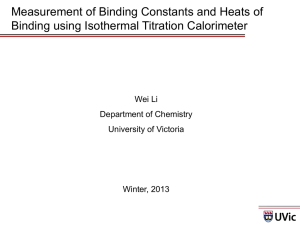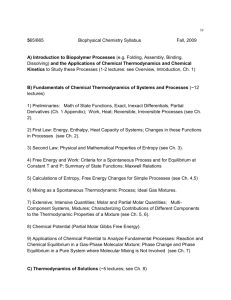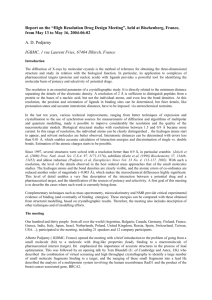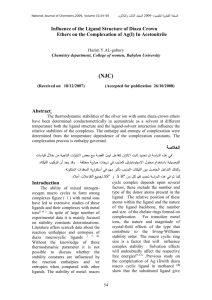Extended abstract
advertisement
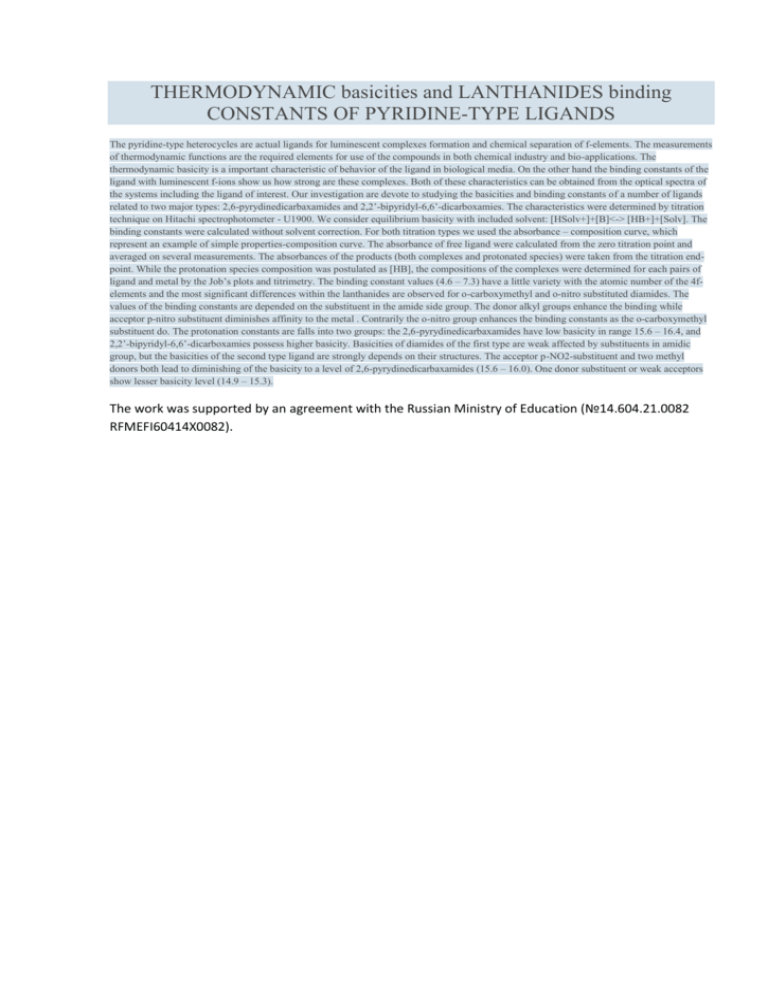
THERMODYNAMIC basicities and LANTHANIDES binding CONSTANTS OF PYRIDINE-TYPE LIGANDS The pyridine-type heterocycles are actual ligands for luminescent complexes formation and chemical separation of f-elements. The measurements of thermodynamic functions are the required elements for use of the compounds in both chemical industry and bio-applications. The thermodynamic basicity is a important characteristic of behavior of the ligand in biological media. On the other hand the binding constants of the ligand with luminescent f-ions show us how strong are these complexes. Both of these characteristics can be obtained from the optical spectra of the systems including the ligand of interest. Our investigation are devote to studying the basicities and binding constants of a number of ligands related to two major types: 2,6-pyrydinedicarbaxamides and 2,2’-bipyridyl-6,6’-dicarboxamies. The characteristics were determined by titration technique on Hitachi spectrophotometer - U1900. We consider equilibrium basicity with included solvent: [HSolv+]+[B]<-> [HB+]+[Solv]. The binding constants were calculated without solvent correction. For both titration types we used the absorbance – composition curve, which represent an example of simple properties-composition curve. The absorbance of free ligand were calculated from the zero titration point and averaged on several measurements. The absorbances of the products (both complexes and protonated species) were taken from the titration endpoint. While the protonation species composition was postulated as [HB], the compositions of the complexes were determined for each pairs of ligand and metal by the Job’s plots and titrimetry. The binding constant values (4.6 – 7.3) have a little variety with the atomic number of the 4felements and the most significant differences within the lanthanides are observed for o-carboxymethyl and o-nitro substituted diamides. The values of the binding constants are depended on the substituent in the amide side group. The donor alkyl groups enhance the binding while acceptor p-nitro substituent diminishes affinity to the metal . Contrarily the o-nitro group enhances the binding constants as the o-carboxymethyl substituent do. The protonation constants are falls into two groups: the 2,6-pyrydinedicarbaxamides have low basicity in range 15.6 – 16.4, and 2,2’-bipyridyl-6,6’-dicarboxamies possess higher basicity. Basicities of diamides of the first type are weak affected by substituents in amidic group, but the basicities of the second type ligand are strongly depends on their structures. The acceptor p-NO2-substituent and two methyl donors both lead to diminishing of the basicity to a level of 2,6-pyrydinedicarbaxamides (15.6 – 16.0). One donor substituent or weak acceptors show lesser basicity level (14.9 – 15.3). The work was supported by an agreement with the Russian Ministry of Education (№14.604.21.0082 RFMEFI60414X0082).


